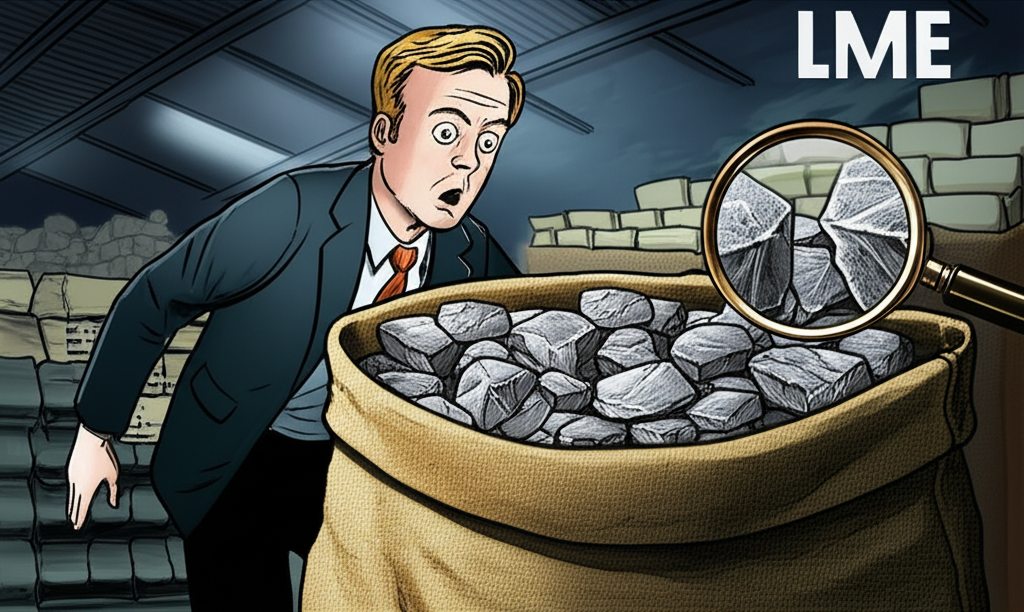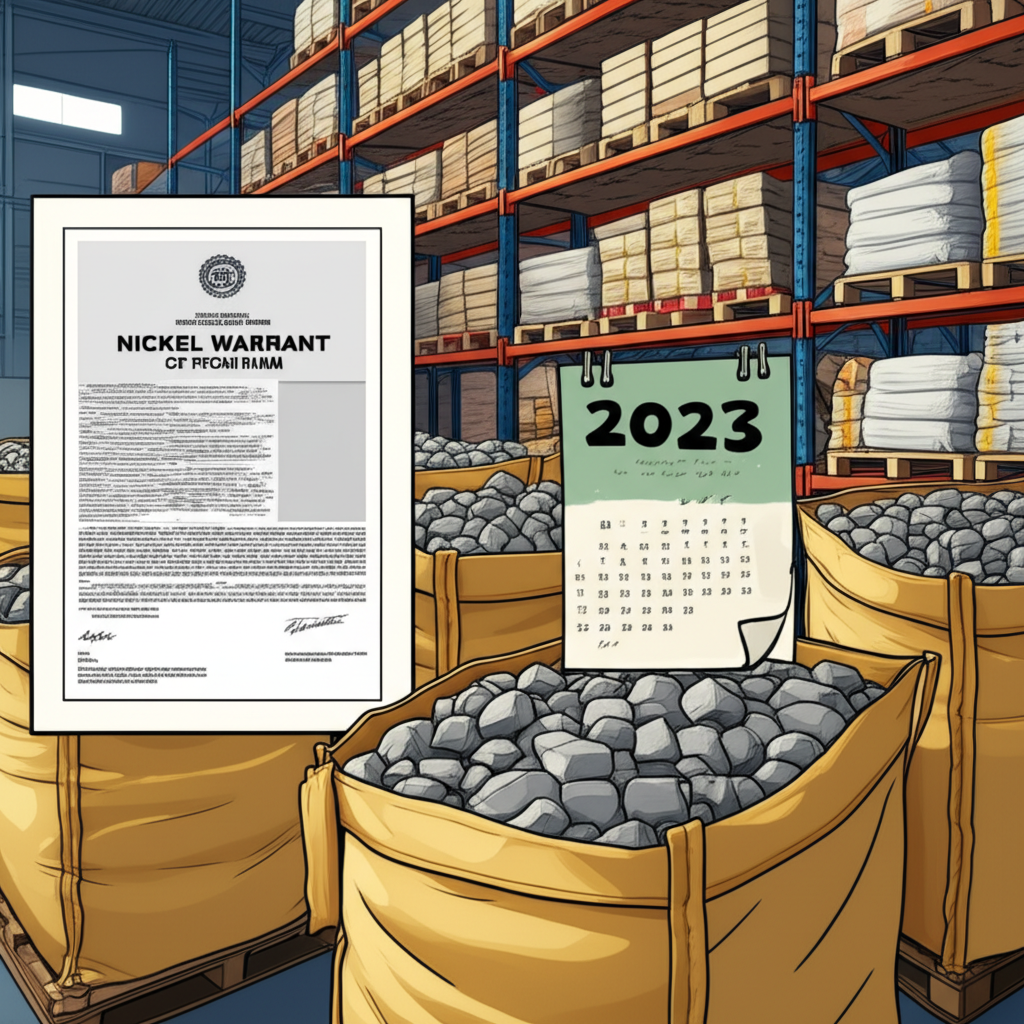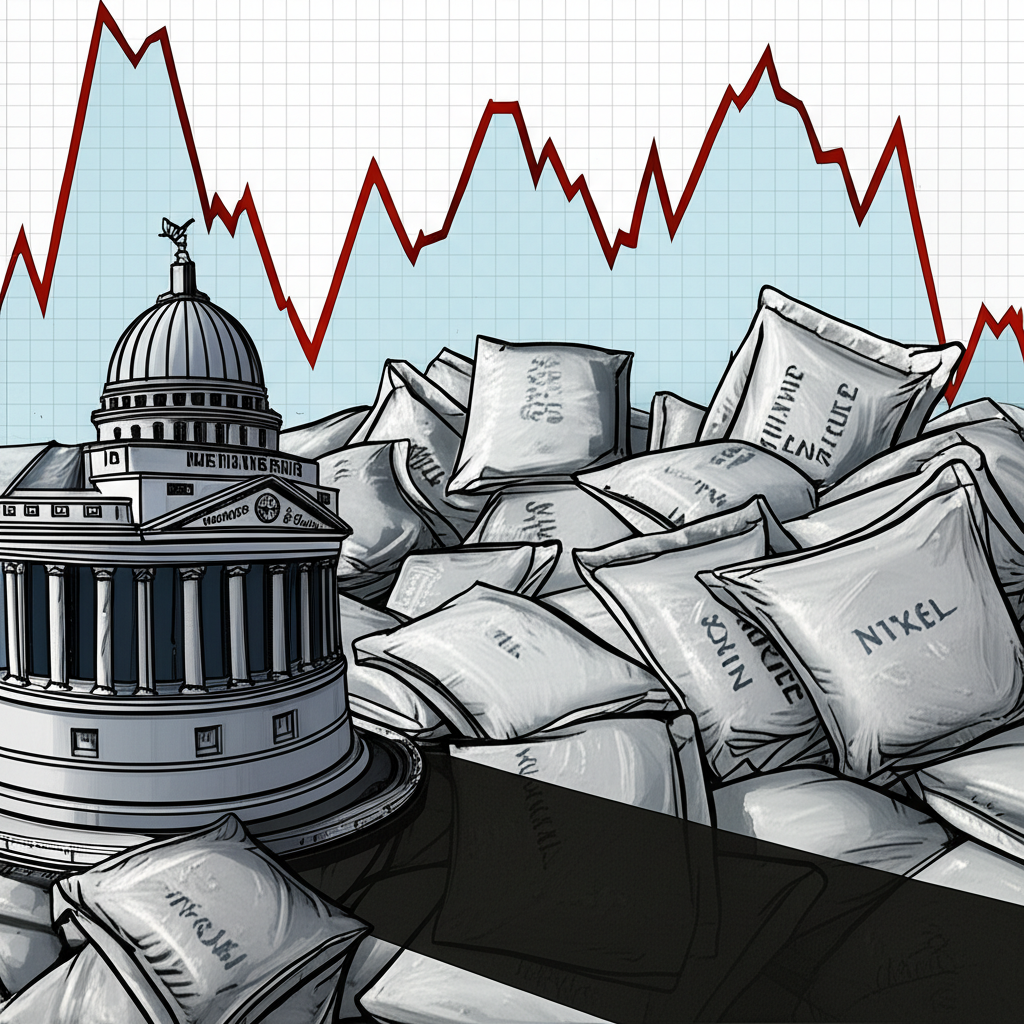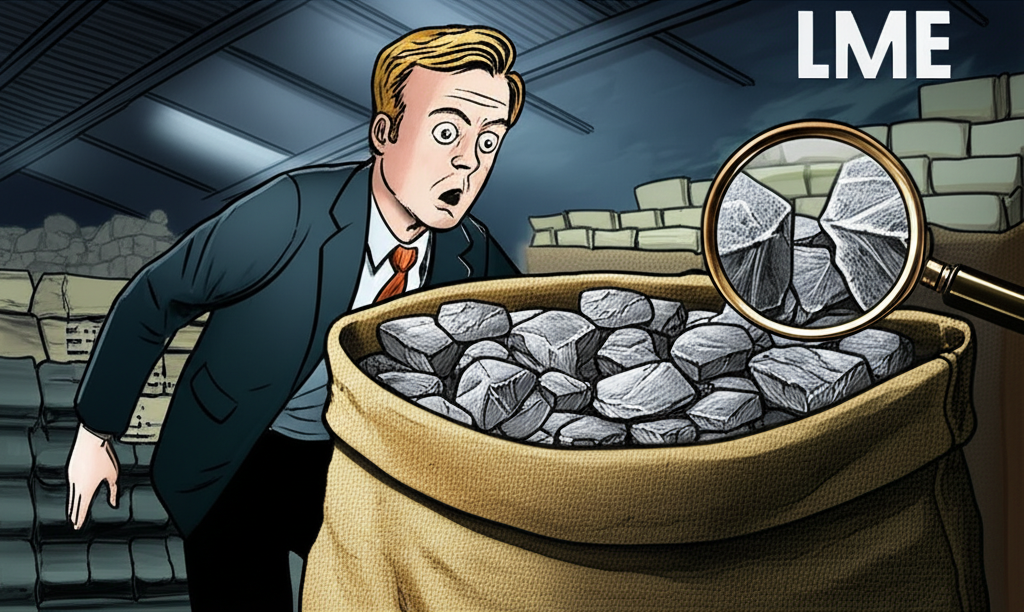Introduction: The Shocking Discovery That Challenged Commodity Trust

In early 2023, a discovery at a Rotterdam warehouse sent shockwaves through the global commodities sector: JPMorgan Chase, one of the world’s most influential financial institutions, found that bags supposedly holding high-grade nickel contained nothing more than ordinary stones. The revelation wasn’t just a case of theft—it was a systemic failure. With an estimated loss between $1.3 million and $2 million, the incident raised urgent questions about the reliability of physical commodity verification, the integrity of warehouse operators, and the oversight capabilities of the London Metal Exchange (LME). At the heart of the issue lies a decades-old trading model that relies heavily on paper-based warrants—documents certifying ownership of stored metal—without routine physical checks. This case exposed how deeply vulnerable that system remains, even in the 21st century.
The JPMorgan Nickel Incident: A Timeline of Deception

The fraud came to light when JPMorgan initiated a routine withdrawal of nickel backed by LME-recognized warrants stored in a Rotterdam facility operated by Access World, a globally recognized logistics provider authorized by the exchange. Upon inspection, the bags—sealed and presumed to contain pure nickel—were found to be filled with inert stones. The discrepancy between documentation and physical reality was stark. No alarms had been triggered during storage; the fraud remained undetected because inspections are typically conducted only when goods are withdrawn, not during the holding period. This blind spot allowed the substitution to persist, undermining the fundamental premise of commodity trading: that ownership of a warrant equals ownership of real, valuable material. The incident highlighted how easily trust can be exploited when verification is deferred and physical checks are treated as exceptions rather than standard practice.
LME’s Shadow: Connecting to Broader Nickel Market Instability

The fallout from the nickel-for-stones scandal landed at a particularly fragile moment for the LME. Just one year earlier, in March 2022, the exchange had been thrown into chaos by a historic short squeeze that caused nickel prices to spike by over 250% in a single day. The resulting trading suspension and the unilateral cancellation of $3.9 billion in trades severely damaged the LME’s credibility. When news broke of fraudulent stock in an approved warehouse, it felt less like an anomaly and more like a symptom of deeper institutional weaknesses. Critics questioned how an entity responsible for certifying global metal storage could allow such a breach to occur. The LME quickly launched an internal investigation and pledged to review its audit protocols, but the damage to market confidence was immediate. Traders, banks, and investors began re-evaluating their reliance on warehouse receipts, recognizing that even exchange-approved systems could harbor hidden risks. The incident, as reported by Reuters, underscored a growing crisis of trust in the physical backbone of metal markets.
A Recurring Nightmare: The History and Mechanisms of Commodity Warehouse Fraud

The JPMorgan case is not an isolated event—it is part of a troubling pattern that has haunted commodity markets for decades. The most infamous precedent is the 2014 Qingdao port scandal, where Chinese traders used the same copper and aluminum stocks as collateral for multiple loans from different banks, effectively double- or even triple-pledging the same metal. The scheme unraveled when banks attempted to seize the collateral and discovered the warehouses were either empty or filled with worthless substitutes. Losses totaled over $3 billion. Similar incidents have occurred within LME-certified facilities: in 2015, lead bars in South Korea were found to be made of concrete, and zinc stocks in Europe were reported missing without explanation. These frauds share common traits: they exploit the opacity of bulk storage, the delay between documentation and verification, and the trust placed in intermediaries. Often, the sheer volume of material makes random inspections ineffective, while digital tracking remains underutilized. The result is a system where paper can outweigh physical reality—a dangerous imbalance that fraudsters continue to exploit.
Unpacking Vulnerabilities: Why Fake Commodities Persist in Global Supply Chains
The persistence of such frauds points to structural weaknesses that go beyond individual lapses. Global commodity supply chains are vast, fragmented, and span multiple jurisdictions, each with its own regulatory standards and enforcement capacity. Goods may pass through several ports, warehouses, and brokers before reaching their final destination, creating numerous opportunities for tampering. The reliance on third-party warehouse operators and surveyors introduces additional risk, especially if those entities lack independence or face pressure to avoid disruptions. Moreover, bulk commodities like nickel are often stored in sealed, non-transparent bags or containers, making visual inspection impractical without opening each unit—a costly and time-consuming process. Even when audits are conducted, they are frequently scheduled in advance, allowing bad actors to temporarily restore legitimacy before inspections. While technologies like blockchain, IoT sensors, and AI-driven anomaly detection exist, their adoption remains inconsistent across the industry. Without standardized digital tracking and real-time verification, the gap between documented ownership and physical presence will continue to be a target for exploitation.
Market Repercussions and Calls for Reform
The discovery of stone-filled nickel bags triggered immediate consequences across financial and trading circles. For JPMorgan, the direct financial hit was significant, but the reputational risk was equally concerning. Although the bank was not directly responsible for warehouse management, the incident raised questions about its collateral verification processes. Across the market, confidence in warehouse receipts—long treated as reliable proxies for physical metal—was shaken. Traders began demanding more rigorous due diligence, including independent verification and site visits, even for LME-approved locations. Access World, as the operator of the Rotterdam warehouse, faced intense scrutiny and potential legal exposure. Meanwhile, the LME came under renewed pressure to overhaul its oversight model. Bloomberg documented the exchange’s response, which included promises of more frequent, unannounced audits and a review of warehouse certification criteria. The broader message was clear: trust alone is no longer enough—transparency and accountability must be enforced.
Forging a Secure Future: Lessons Learned and Proactive Solutions
The JPMorgan incident serves as a critical inflection point for the global commodities industry. To prevent future fraud, systemic changes are required. First, audits must become more frequent, unpredictable, and conducted by truly independent parties. The current model, where inspections are rare and often announced in advance, must be replaced with a regime of continuous monitoring. Second, stakeholders—from banks to traders—must shift from passive reliance on documentation to active verification. This includes investing in physical inspections and leveraging technology to close the gap between paper and reality. Blockchain, for example, can create an immutable ledger of ownership and movement, making it nearly impossible to forge records or double-sell the same metal. IoT sensors can monitor weight, temperature, and location in real time, alerting operators to unauthorized access or tampering. AI can analyze trading patterns to flag anomalies that might indicate fraud. Beyond technology, international cooperation is essential. The World Economic Forum has emphasized the need for global standards in commodity tracking, arguing that fragmented systems breed vulnerability. Only through unified protocols can the industry build a truly resilient infrastructure.
Conclusion: Rebuilding Trust in the Foundations of Global Trade
The discovery of stones in place of nickel was more than a financial loss—it was a breach of the foundational trust that enables global commodity markets to function. From the LME’s oversight failures to the outdated reliance on paper-based warrants, the incident revealed vulnerabilities that have persisted for too long. While the immediate response has been increased scrutiny and calls for reform, lasting change will require a fundamental shift in mindset. The industry must move from reactive compliance to proactive integrity, embracing innovation not as an option but as a necessity. The cost of inaction is clear: eroded investor confidence, rising insurance premiums, and a growing disconnect between financial instruments and the physical assets they represent. By integrating advanced technology, strengthening accountability, and harmonizing global standards, the commodities sector can begin to rebuild trust—not just in warehouse receipts, but in the entire ecosystem of international trade. The lesson is not merely to prevent another “nickel-for-stones” fraud, but to ensure that such a deception becomes impossible in the first place.
What exactly happened with JPMorgan and the nickel bags in the warehouse?
JPMorgan Chase discovered bags that were supposed to contain nickel, stored in an LME-approved warehouse in Rotterdam operated by Access World, actually contained stones. This fraudulent swap represented a significant financial loss for the bank.
Who was identified as responsible for the fraudulent nickel in the Rotterdam warehouse?
While investigations by the LME and relevant authorities were launched, initial reports focused on the warehouse operator, Access World, and the parties involved in the chain of custody for the specific warrants. The ultimate perpetrator of the fraud itself was subject to ongoing investigation.
What role does the London Metal Exchange (LME) play in this incident and commodity verification?
The LME is a global leader in metal trading and certifies warehouses for storing metals that back LME contracts. Its role involves setting standards and conducting audits. The incident raised serious questions about the effectiveness of its oversight and verification processes for LME-approved facilities.
How much financial loss did JPMorgan incur due to the discovery of stones instead of nickel?
The estimated financial loss for JPMorgan Chase due to the fraudulent nickel was reported to be between $1.3 million and $2 million, based on the market value of the expected nickel.
Has there been a history of similar commodity warehouse frauds before the JPMorgan incident?
Yes, commodity warehouse frauds are not new. Notable past incidents include the 2014 Qingdao port scandal in China, where metals were pledged multiple times, and other cases of missing or compromised metals in LME-approved warehouses, highlighting a recurring vulnerability in global supply chains.
What are the broader implications of the “nickel for stones” fiasco for global commodity markets and investor trust?
The incident significantly eroded investor confidence in the integrity of physical commodity markets and the reliability of warehouse receipts. It put pressure on exchanges and warehouse operators to enhance transparency, security, and verification protocols to restore faith in the system.
What measures can investors and traders take to protect themselves from commodity fraud?
- Conduct thorough due diligence on warehouse operators and the chain of custody.
- Demand independent and frequent physical inspections.
- Diversify storage locations.
- Stay informed about regulatory changes and technological advancements in supply chain transparency.
- Consider using platforms that leverage blockchain for immutable record-keeping.
What actions are regulatory bodies and exchanges taking to prevent future incidents like this?
Following the incident, regulatory bodies and exchanges like the LME increased scrutiny on approved warehouses, mandated stricter auditing requirements, and explored technological solutions such as blockchain and IoT for enhanced traceability and real-time monitoring of stored commodities.
Was the warehouse operator, Access World, held accountable for the fake nickel?
Access World, as the operator of the Rotterdam warehouse, faced intense scrutiny and was part of the LME’s investigation. While specific legal or financial accountability details might vary, such incidents typically lead to increased liability for warehouse operators and potential changes in their operational procedures and contractual obligations with clients.
How does the concept of “warehouse receipts” relate to the ownership and verification of physical commodities?
Warehouse receipts, or warrants, are documents of title that represent ownership of a specific quantity of a commodity stored in a designated warehouse. They allow for the trading of physical commodities without moving the actual goods. The JPMorgan incident highlighted that the integrity of these receipts is entirely dependent on the physical goods they represent actually being present and correct, making verification crucial.

留言